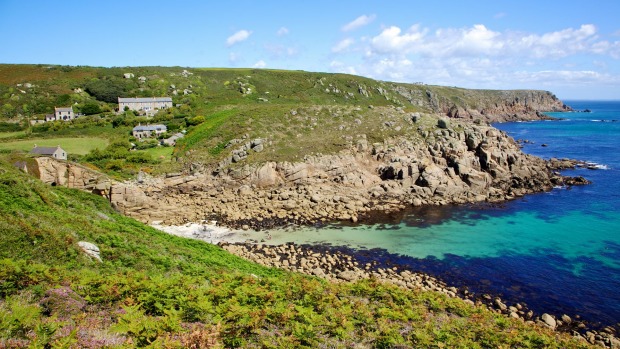
Plunging into tempestuous, turquoise Atlantic waters, the scrubby green headlands are capped by what looks like, from afar, the relics of some long-lost civilisation, or an abandoned set from a post-apocalyptic movie. Edge closer, however, and the truth dawns. Tickled by overgrown grass and bright yellow wildflowers, these slim, dormant clifftop chimneys and crumbling stone outhouses are the remnants of what was, in the early 19th century, the world's richest centre of copper and tin mining.
After decades out of the limelight, the long-disused mine shafts, stacks and engine houses of Cornwall - part of the UNESCO World Heritage-listed Cornwall and West Devon Mining Landscape - are enjoying a new lease of life, thanks to Poldark, the ABC's glossy new adaptation of Winston Graham's internationally best-selling novels.
Set in the late 1700s, and focused around Ross Poldark, a former smuggler-cum-war veteran-turned-mining magnate (played by smouldering Irishman Aidan Turner), the show flaunts the arresting natural beauty and industrial heritage of what is arguably Britain's most picturesque region; a duchy with a proud independent streak (and its own ancient Celtic language, customs and flag).
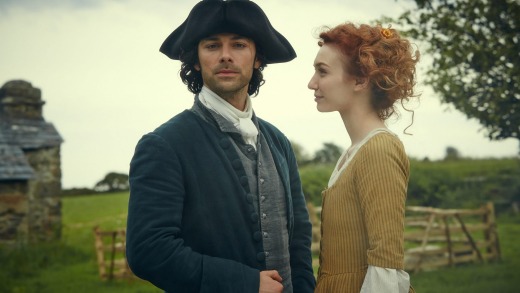
The body in charge of promoting tourism here, Visit Cornwall, boasts a 50 per cent spike in website hits since Poldark was first broadcast (in March in Britain; April in Australia) with chief executive Malcolm Bell saying, "Poldark has been an incredible gift to Cornwall".
"We couldn't ask for a more powerful showcase and with the second series confirmed it can only get better."
Enhanced by some digital trickery, the Owles and Crown mine near Botallack, perched perilously close to a granite cliff-edge, plays the role of Wheal Leisure the dishevelled tin mine revived by Turner's Poldark. An eerie, magnetic sight, especially under brooding skies, it's linked by a clifftop walk - one of countless ludicrously scenic coastal paths in Cornwall - to the Levant Mine, which doubles as the fictional Tressiders Rolling Mill (where ore from Poldark's mine is processed). Levant staff report a 91 per cent increase in visitor numbers compared to last year, with much interest in its star attraction: the world's only Cornish beam engine still powered by steam. Restored after 60 idle years by volunteers - fondly dubbed the "Greasy Gang" - this marvel of Victorian engineering helped transport men and minerals through this so-called "mine beneath the sea", where candle-lit shafts delved more than 1½ kilometres from the cliffs and more than 550 metres beneath the seabed.
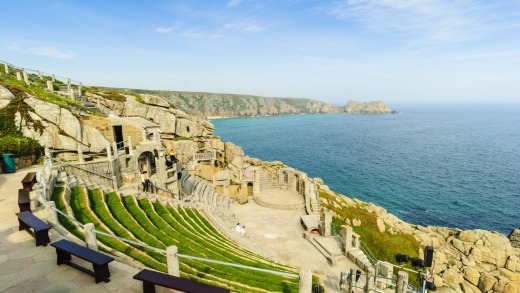
It's not just the "Poldark effect" that draws outsiders to this National Trust-run mine. "We get quite a few Australians keen to trace their Cornish roots," says custodian Anthony Power. "There's a big Cornish community on the Copper Coast in South Australia, and many Cornish miners also sought their fortunes in the gold rushes of New South Wales and Victoria."
Levant is in St Just parish, which is twinned with Bendigo. Another gorgeous mine relic-strewn region of Cornwall is the St Agnes Head area, which represents the "Nampara Valley", part of Poldark's family estate, in the new series. It's also where Winston Graham, who lived in nearby Perranporth, drew much of his inspiration.
You can take atmospheric shaft tours down Poldark Mine, near Heston, where some of the show's underground mine scenes were shot. Originally called Wheal Roots, and a hub of tin mining since the Bronze Age, it earned its catchy moniker, with permission from Graham, in the 1970s, when the BBC's first adaptation of Poldark was broadcast in more than 40 countries.
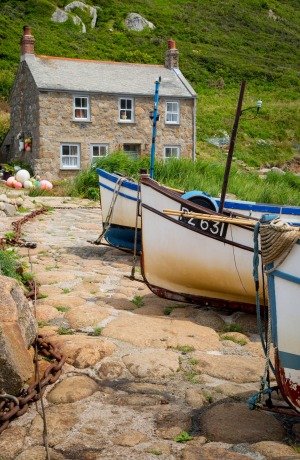
Though it hasn't featured on screen in the latest series, a key component of the Poldark trail is Truro, the snug Cornish capital, a once-bustling inland port, nestled at the confluence of three rivers.
"Truro is where the grand balls and townhouses in Poldark were set, and where tin from the local mines would be taxed by the Crown," says Viv Robinson, who leads Poldark-themed strolls around the city's cafe-packed core, which is centred around a mighty neo-gothic cathedral.
"Winston Graham's historical research was very good, and his stories contained a lot of vivid social comment on the conflicts between the rich mine owners and bankers, and the poor miners and their families. There were actually food riots in Truro when miners couldn't afford the price of bread."
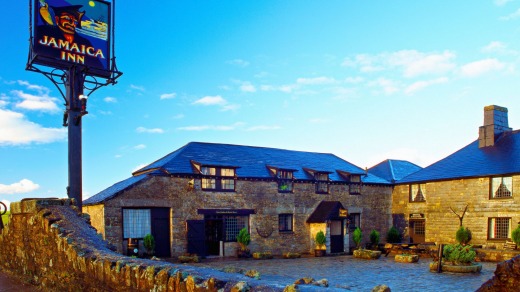
Some of Poldark's Truro scenes were filmed at charming Charlestown, whose Grade II-listed harbour is graced with vintage tall ships that have appeared in other big-name productions, such as Tim Burton's Alice in Wonderland.
Accessible via winding country lanes, edged by fields of grazing cattle and stone farmhouses, Church Cove at Gunwalloe, on the Lizard Peninsula, is another location that shows off the spectacular Cornish coastline. So, too, does Porthgwarra, a tiny, cliff-fringed cove. This is where Demelza, Poldark's servant-turned-wife, spied her naked boss having a wash (in what's been labelled Turner's "Mr Darcy moment").
During filming, Porthgwarra's beach-side cafe stayed open until 4am, feeding Cornish pasties - a traditional staple of miners - to cast and crew.
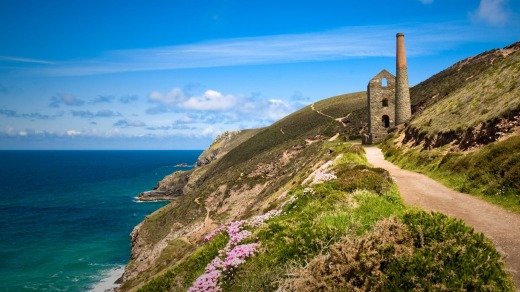
With 12 Graham novels to work with, it's thought the rebooted Poldark could enjoy the longevity of another hit TV show based in Cornwall. Starring Martin Clunes as a curmudgeonly GP, and exported to more than 200 countries, Doc Martin is filming its seventh series in Port Isaac.
Blessed with winding, cottage-filled cobbled streets, galleries, fashion boutiques, bakeries and seafood restaurants, Port Isaac rivals Padstow St Ives, Fowey and Portloe for the title of Cornwall's most photogenic fishing village.
"We've always had tourists, but since Doc Martin started [in 2004], we've had about double the visitors," says John Brown, a fisherman, tour guide and Doc Martin extra, born and raised in Port Isaac. "We've had fans from as far as America, Chile, South Africa. Quite a few Australians, too. They seem to rather like it here."

visitcornwall.com, visitbritain.com
For Viv Robinson's walking tours of Truro and tailor-made trips of Cornwall, see absolutours.co.uk.
For John Brown's tours of Cornwall, including Port Isaac, see portisaactours.com.
Flybe has three daily flights from London Gatwick to Newquay, Cornwall's largest airport, and one daily flight from London Stansted; newquaycornwallairport.com.
There are 11 trains a day from London Paddington to Cornwall, with between five and six hours' travel time. The nightly Night Riviera Sleeper train departs Paddington at 11.45pm, arriving at Penzance at 7.53am; firstgreatwestern.co.uk.
Cornish public transport is sparse, so it's best to hire a car. There's a Europcar office at Penzance station; europcar.co.uk.
Facing St Michael's Mount, The Godolphin Arms is a family-run, boutique hotel-restaurant in the lovely market town of Marazion, seven kilometres from Penzance. Rooms from $260; godolphinarms.co.uk.
A fine base for visiting the Eden Project and Lost Gardens of Heligan, The Cornwall Hotel, Spa and Estate fuses Victorian and modern decor in 17 hectares of parkland on the outskirts of St Austell. Rooms from $277; thecornwall.com.
Said to be the inspiration for Toad Hall from The Wind in the WIllows - author Kenneth Grahame was a regular guest - Fowey Hall Hotel occupies a handsome old mansion above the estuary of Fowey (rhymes with joy). Rooms from $425; foweyhallhotel.co.uk.
With scenic clifftop walks on the doorstep, and an 18-hole golf course, Treglos Hotel oozes old-fashioned charm in the Seven Bays area, near Padstow. Treglos played host to Poldark cast and crew during filming. Rooms from $285; tregloshotel.com.
Connected by boat, or via a cobbled causeway during low tide, this alluring abbey-crowned island was settled by the same Benedictine order that constructed Mont St Michel in Normandy, and has been owned by the Cornish St Aubyn family for more than 400 years. You can ascend the island's granite hill, poke your nose in its fortified castle, chapel and opulent drawing rooms, hear local myths and folklore, and take in the sublime battlement views. See stmichaelsmount.co.uk.
Blessed with Britain's mildest climate, Cornwall is flush with palm trees and luxuriant, birdlife-rich gardens. National Trust-run Trelissick, Trengwainton and Glendurgen are among the best, but there's something magical about the Victorian-era Lost Gardens of Heligan, which were restored to their former glory after lying derelict for almost a century. The gardens' character changes throughout the year, but their stunning displays of rhododendrons and bluebells make spring (April-June) a must. See heligan.com.
The brainchild of Tim Smit, the man behind the regeneration of Heligan, the Eden Project has transformed an abandoned clay pit into an award-winning eco-friendly extravaganza, famed for its huge geodesic biomes, where tropical and Mediterranean climates have spawned a plethora of plant-life. See edenproject.com.
Between April and October, you can catch a show at the Minack, one of the world's most magnificently situated open-air theatres. Dug into a cliffside overlooking the Atlantic, it's the lifetime work of the late Rowena Cade, who, in the 1930s, hosted a local adaptation of Shakespeare's The Tempest at the bottom of her garden. The Minack's evolution from rustic backyard theatre into a modern 750-capacity venue is traced in an on-site museum. See minack.com.
Cornwall's surf-tastic beaches and serene sapphire bays seem a world away on Bodmin Moor, the duchy's most rugged inland region (and location of some of Ross Poldark's horse rides). Providing shelter and sustenance to travellers since the 1760s (and also the title of Daphne Du Maurier's iconic novel), Jamaica Inn nestles halfway between Launceston and Bodmin. Cosy up by the inn's roaring fire, and peruse its intriguing little museum, which explores Du Maurier's literary legacy and the history of Cornish smuggling (which became ingrained into the local economy in the 18th and 19th centuries). The inn has 20 rooms. Some of the older ones, with creaking floorboards, are reputedly haunted. See jamaicainn.co.uk.